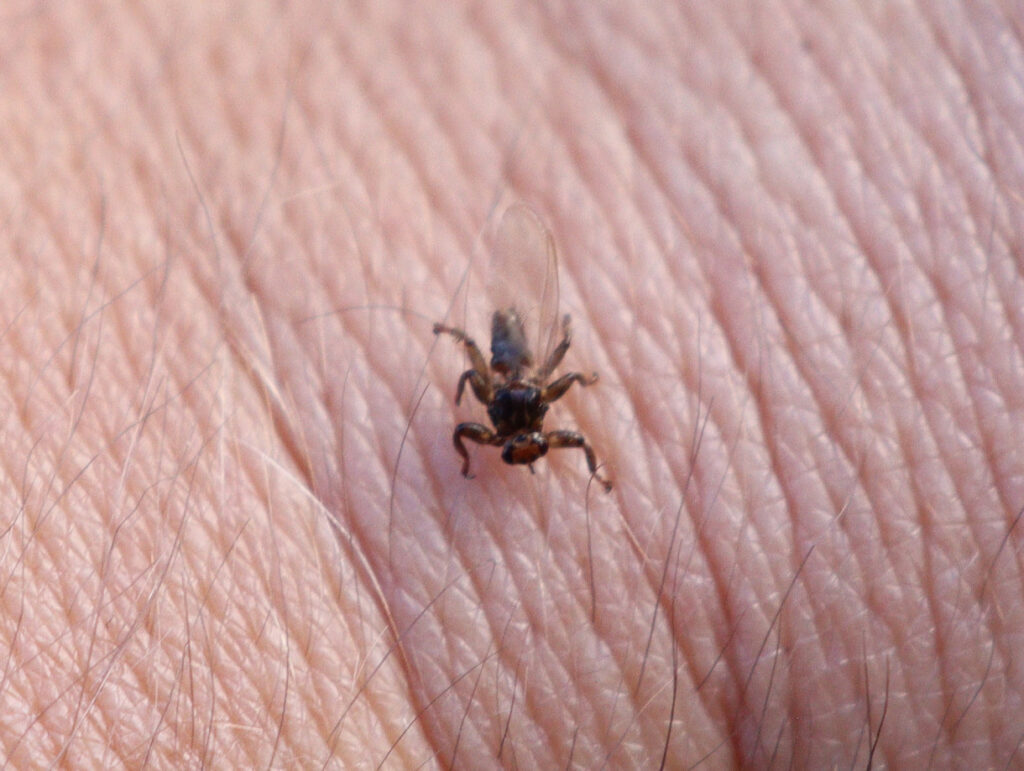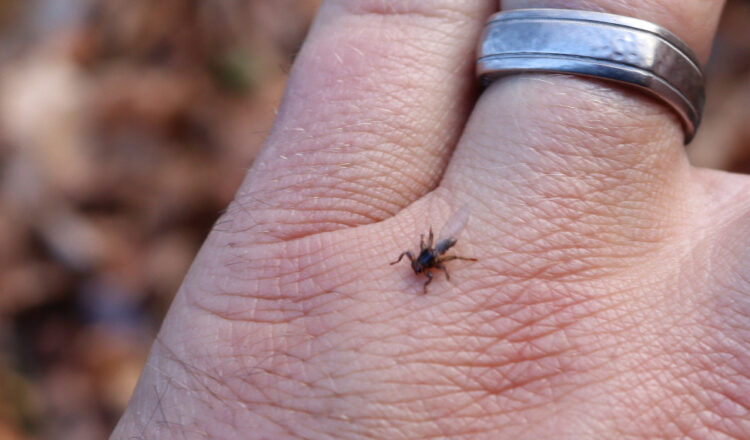By Bob Confer
Deer season in Allegany County is accompanied by all sorts of tension.
Hunters yet to harvest will be a little tense, waiting for the “big one” – or any deer – to saunter by their stand or blind.
Then, hunters who initiate a kill shot will harbor a little anxiety over the possibility of coming in contact with a deer tick while field dressing their harvest.
That latter form of anxiety really ramps up when many successful hunters discover their deer’s fur is covered with what seems to be dozens of ticks.
It’s every hunter’s worst nightmare realized. Is my deer safe to eat? Can I handle it without getting Lyme Disease?
In most cases, yes.
A closer examination of the creepy crawlies will find that most of them are keds, not ticks.
At first glance, they look quite similar. If you look closer, though, you’ll see the keds have segmented bodies (head, thorax, and abdomen), which ticks don’t. You’ll also notice that many of the keds have wings, which ticks don’t.


Deer keds are an invasive species, brought here from Europe, Siberia, and Northern China. Their range in Western New York is limited just to the counties that border Pennsylvania and, even then, their numbers aren’t really pronounced until you get even closer to that border. For example, they are abundant in Alma, but uncommon in Alfred.
The adults make themselves known in the fall, as Allegany County’s bow hunters and hikers know too well. On warm days in late-October and November they will fly around in search of a host. They won’t be noticeable or bothersome in flight as a black fly or deer fly might be. Instead, you won’t see or feel them until they are crawling around on you, which, typically in that season is the exposed parts of your head and hands. More often than not, your encounters with them have you pulling them out of your hair, especially at the nape of your neck if you are a hat-wearer. In your attempts to squish the critters you will notice they are seemingly indestructible – their flat bodies make them difficult to dispatch.
If a ked does bite you, you won’t feel it even though the ked could be sucking your blood for 15 minutes. It won’t be until days later when you’ll develop a red, hard, itchy welt. For most people, that welt can be bothersome for two to three weeks as a reaction to the ked’s saliva.
Once the flying, biting keds finally find their deer (or you) and have made themselves comfortable for feasting, they no longer have need for their wings, so they will snap them off. That means if you find wingless keds on you, they’ve been on you for a while, 15, 30 minutes, or more. The wingless keds will then bite the deer, suck out some blood, and use that nourishment strengthen their bodies and prepare themselves for reproduction.
After mating, this is where it gets weird: Whereas most insects lay eggs, female keds give birth to live young, one at a time. The larva within her is pushed out just it is approaching the pupa stage. The larva or pupa then falls to the ground. The female that birthed it keeps eating and keeps reproducing (no one is sure how many times she can do it). The pupae stay on the ground until transforming into adults the following fall.
It was always believed that keds, though bothersome and creepy, were otherwise harmless, not harboring disease that would make people sick.
But, that thinking might be changing. They might carry some diseases which are by no means as nasty as Lyme Disease but troublesome in their own ways.
This fall an entomologist at Penn State began a study in which he encouraged outdoorspeople to send him winged keds before they satisfied their bloodthirst so he could analyze the insects from various regions and habitats.
Dr. Skvarla believes they could harbor anaplasma, the bacteria that cause anaplasmosis. That is an ailment that results from some tick bites and can lead to intense flu-like symptoms. He also wants to find out if keds carry bartonella in any significant amount. The bacteria are associated with bartonellosis, which some call “cat scratch fever” which can also lead to flu-like symptoms and swollen glands.
When the results of his studies are available, we’ll be sure to report on them for the Wellsville Sun, just in case it leads to a little more precaution for outdoors enthusiasts. Hopefully, his studies find that keds are still, overall, relatively harmless.





